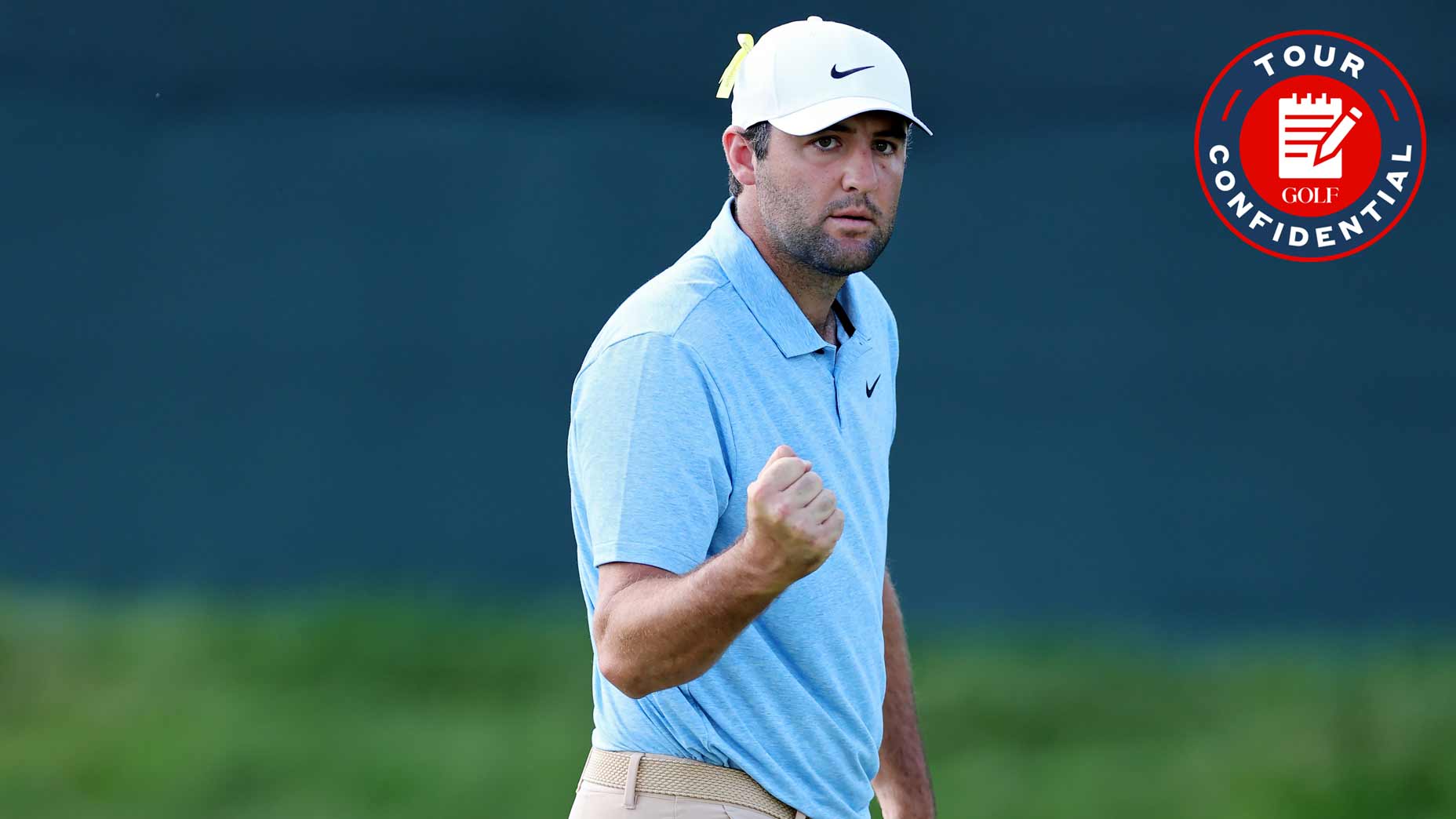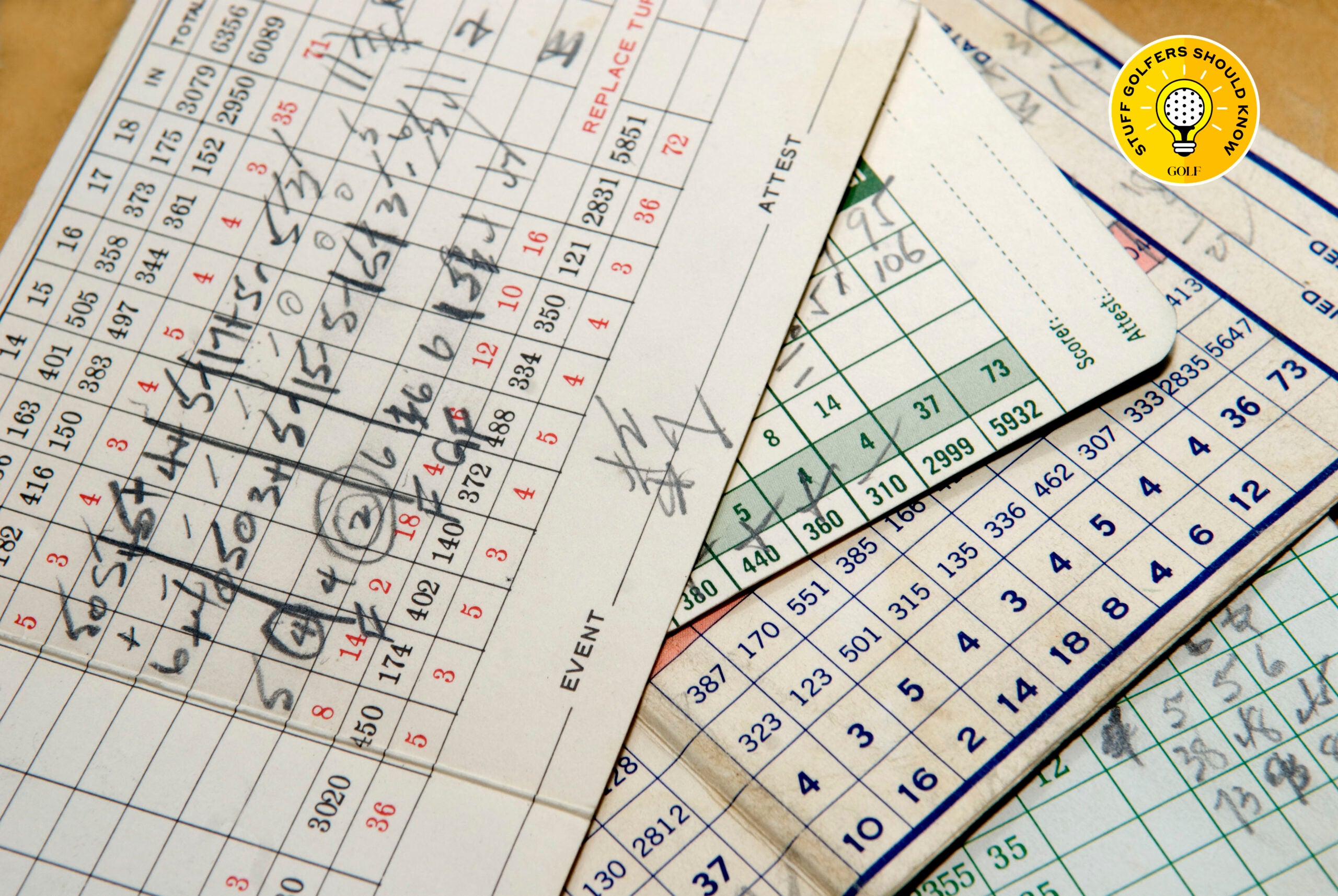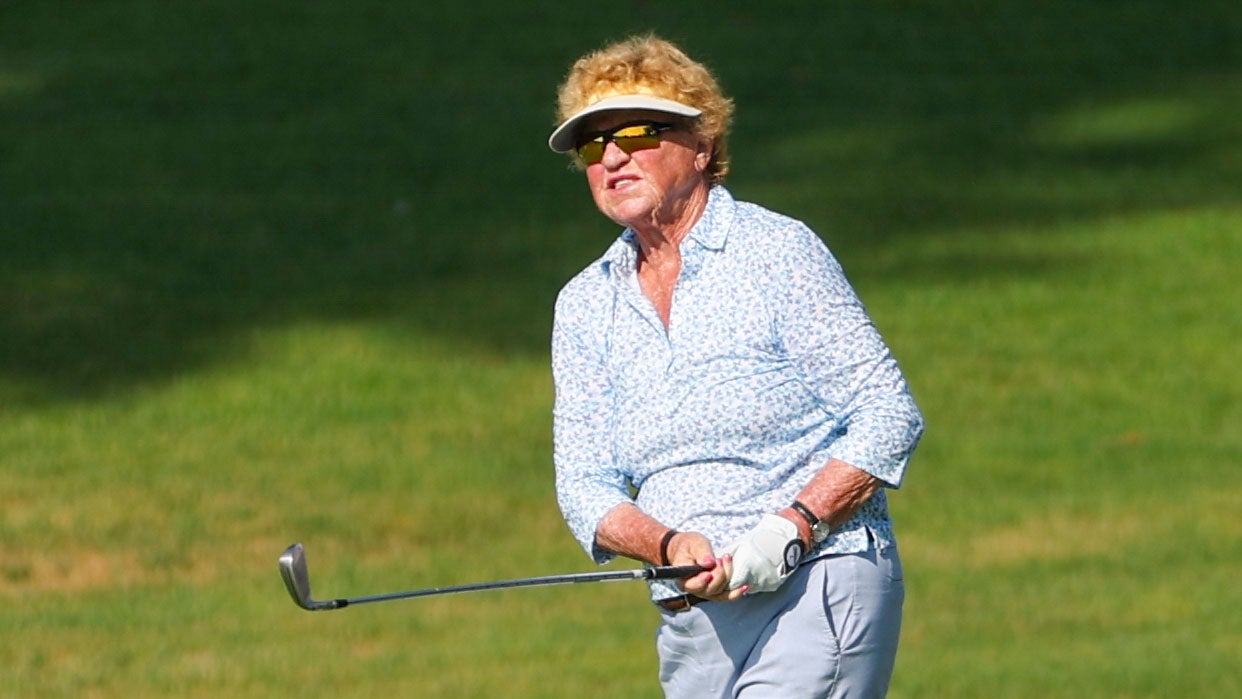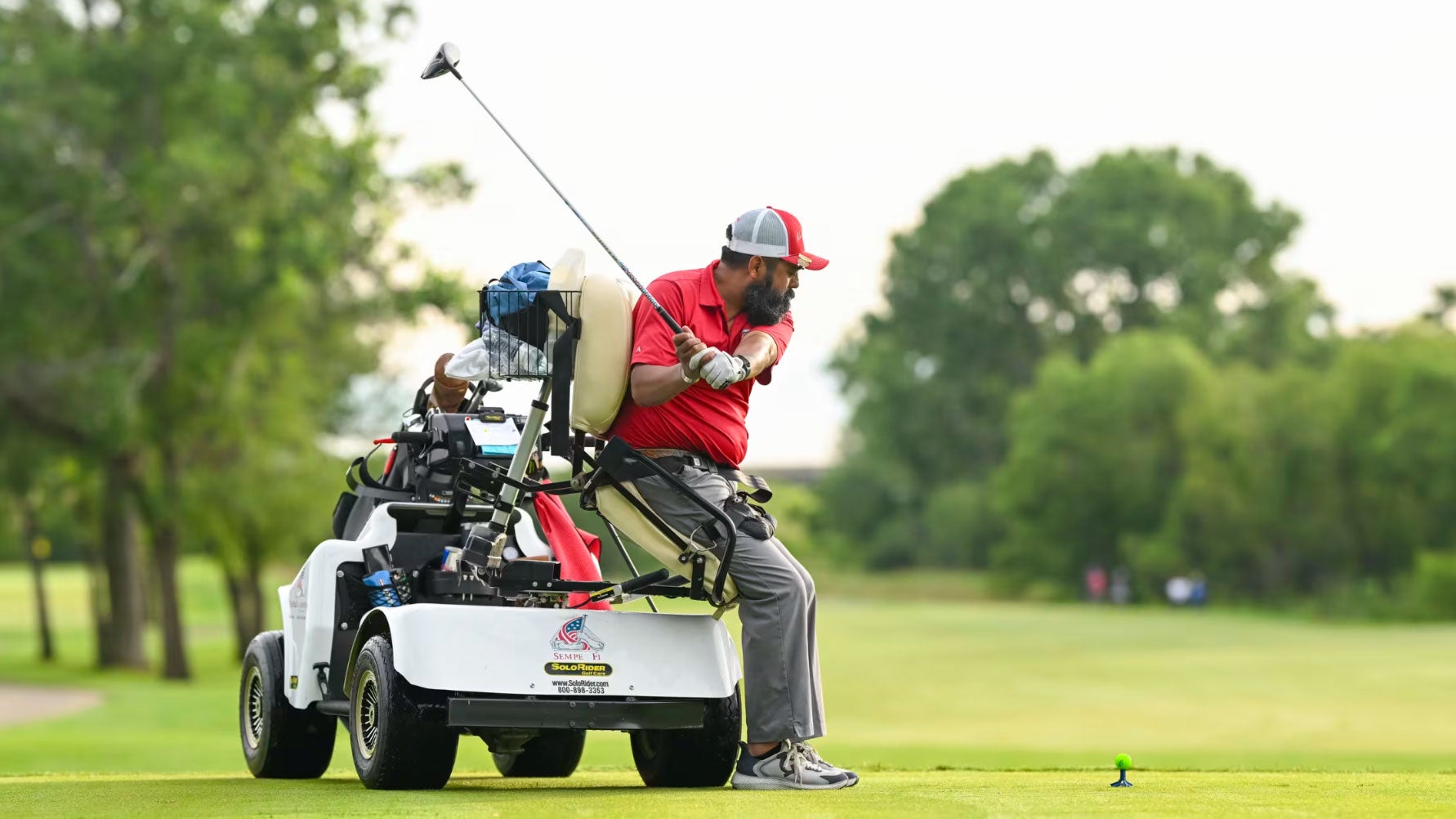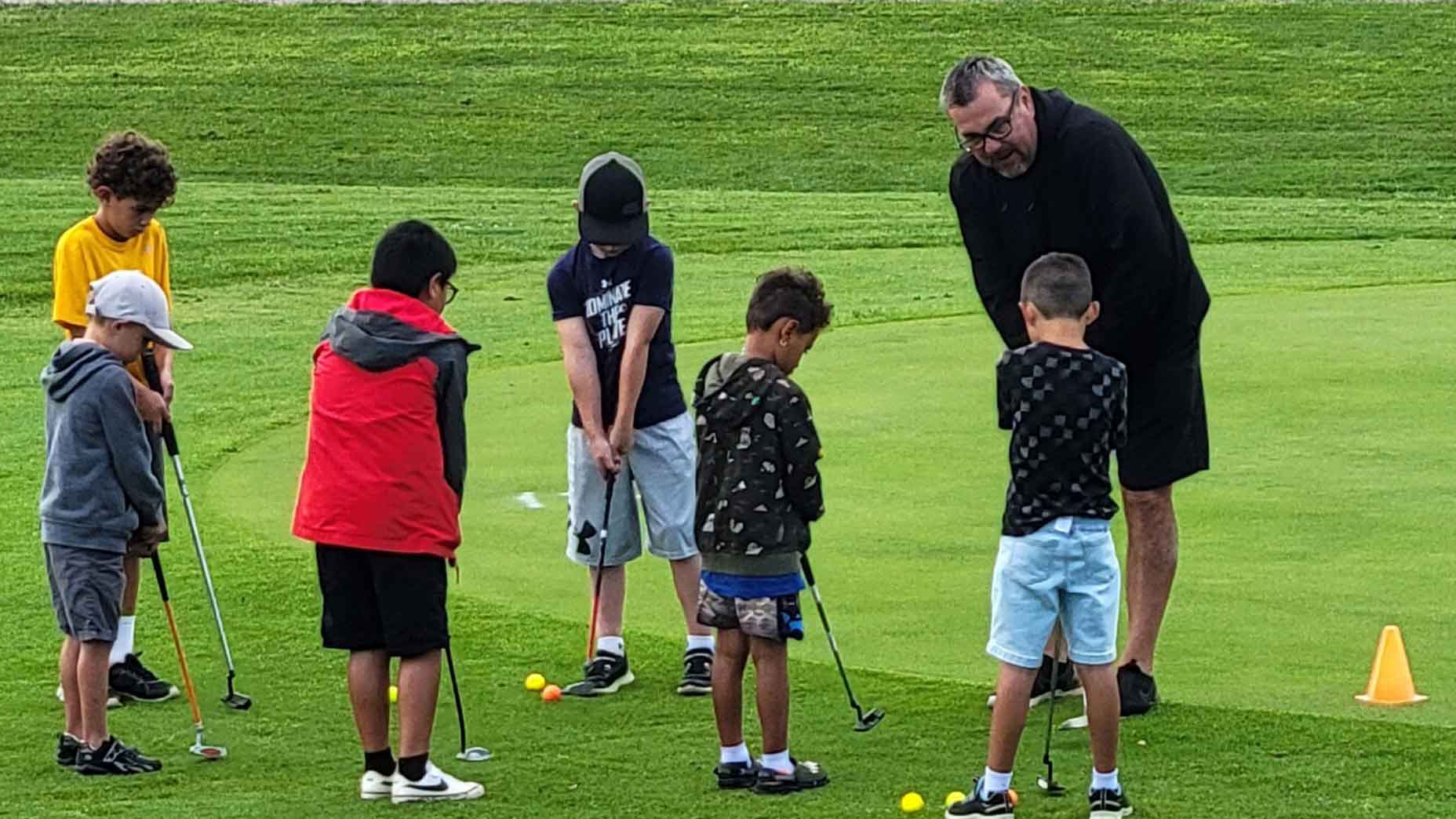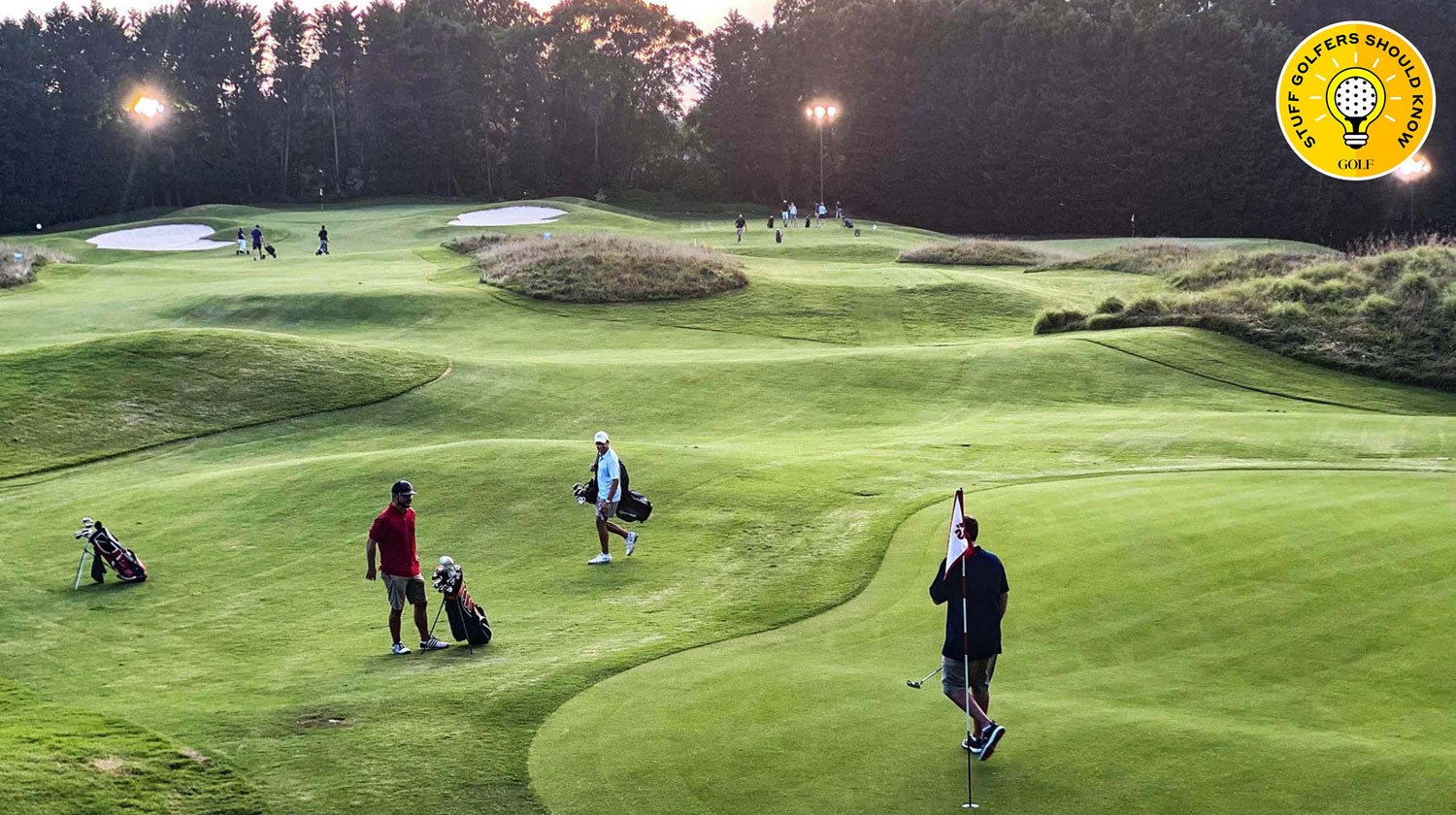Volunteering at the U.S. Open will cost you $225. But it has its perks
- Share on Facebook
- Share on Twitter
- Share by Email

A key part of the engine that powers USGA events: volunteers.
getty images
Many things will catch your eye at this year’s U.S. Open, from Donald Ross’s domed greens that gently rise from an even gentler landscape to the plentiful wiregrass that has been added to the rough to penalize the best players in the world. The sandscape of Pinehurst No. 2 still will be the main draw but this year is surrounded by larger grandstands than its last go-round as our national championship host site, in 2014, not to mention bigger corporate tents and one of the largest outdoor television screens you’ve ever seen overlooking the 18th green. But what you won’t see is the army of volunteers, some 4,000 strong, who have all paid — yes, paid — to work the U.S. Open.
Only in a golf, a game full of zealots and evangelists, does the $225 fee charged by the USGA to volunteer seem like a bargain. And if you think that’s crazy, there are another 2,000 people on the waitlist, hopeful that they, too, get the chance to pony up.
But before you contact a labor attorney, here’s what you get. Volunteers get access to the property for seven days, two shirts, a water bottle, a choice of hat, a jacket and commemorative pins, as well as a drawstring bag for all that loot. Currently, according to the U.S. Open site, one-day gallery tickets for Monday-Sunday would run $630 before fees, with Monday tickets being the cheapest at $65. Yet, the volunteer life, even in the hot, long days of June in North Carolina, can be your best life and is a large part of the reason that Pinehurst, for all its storied history, finds itself as one of the anchor sites for the USGA’s premier golf showcase.
“The volunteers are the backbone of this championship,” says Eric Steimer, senior director of U.S. Open Championships. And when in Pinehurst, the USGA receives an outpouring of volunteer interest because unlike other venues, such as Los Angeles or Boston, the U.S. Open is a community event in Pinehurst, population 18,000.
Of those 4,000 volunteers, around 900 of them are members of Pinehurst Country Club, according to Larry McWane, volunteer chairman for the championship, and himself a club member. The courses at Pinehurst Resort are public but also shared by the Pinehurst Country Club, including the No. 2 course. That enthusiasm extends well past Pinehurst and Moore County, though.
Nearly 70 percent of the volunteers will come from the state of North Carolina with that number growing to more than 80% when you add states that border North Carolina, Steimer said. That sort of support, along with the historic nature of No. 2, was a key factor in the USGA naming Pinehurst as an anchor site.
“The golf course is what the golf course is — a cathedral of the game,” says Steimer, but “the bigger testament to Pinehurst is the community support and the way they are embracing us.” McWane agrees, noting that many of the volunteers for this year’s championship also worked the 2014 championship, himself included, when he also served as volunteer chairman.
In preparation for 2029, McWane is training his top lieutenant to take over. Pinehurst’s real secret to an efficient volunteer operation isn’t just the forethought of this transition but also in the makeup of who will take over to help spearhead the next event.
When Steve Griswold retired at the rank of colonel from the Air Force, he and his wife (also an Air Force veteran) retired to Pinehurst. A lifelong golfer, Griswold happened upon volunteering, first at the North-South Open and then later at the 2018 U.S. Amateur.
Tour Confidential: Scheffler’s dominance continues, U.S. Open previewBy: GOLF Editors
“Like many of the residents here, we’ve come in from all parts of the world,” he says. “Many folks like myself love the game of golf, and so we want to stay involved with it. A lot of retirees that have lived elsewhere volunteered at tournaments wherever they lived, be it major championships or PGA Tour events or LPGA events. When they got here, the opportunity presents itself for you to volunteer for tournaments.”
And it’s true. While No. 2 last played host to the U.S. Open for both men and women in 2014, numerous championships have taken place at the resort since then including two U.S. Adaptive Opens and the U.S. Amateur.
Aside from staying close to the game, Griswold says one of things volunteering does is allowing him to use his military background to help things run smoothly. In fact, there are number of former military personnel working the championship as volunteers. Says Griswold: “We’re used to dealing with the complex things. We’re used to developing plans and then executing plans. You’re used to a chain of command and dealing with logistics.”
Griswold says the appeal of volunteering, for him, is to “just be part of the spectacle. A very small part. I won’t actually watch very much golf. I’ll be out and about in the cart around the course dealing with things. As a fan, I would love to be able to walk around and just watch the golf, but I’m excited about the excitement about having the Open and people being here. As long as all the plans go according to how they’re supposed to work, which I think they will, the open will be a success.”
As much as they enjoy volunteering, there is one pitfall for McWane.
“Of our 4,000 volunteers, all of them want to be scoring markers, which gets you inside the ropes.” He says the hardest part of his job is saying no. “There are only 60 scoring markers so that’s a lot of disappointed people.” Many of whom he must see at the club after the championship and for the rest of year.
On the day we spoke, workers were busy putting up more scaffolding and building out the massive infrastructure that is now required for major championship golf, but the playing corridors of the course were still as rugged and pristine — the paradox that makes No. 2 stand out — as ever. The run-up to the event wasn’t quite the ball of stress I had imagined, but then again, they’ve done this before and will many times more. McWane and Griswold were both calm and ready to go, men who’ve gone into the breach before and come out just fine.
“I’m just excited that we get to show off our club,” Griswold said. “I’m excited to see No. 2 shine.”
Latest In News

Golf.com Photographer
Michael Croley is a freelance golf writer in Ohio. His features, reviews, and essays have appeared in Golf Digest, Golf Magazine, The Golfer’s Journal, Bloomberg Businessweek, Esquire, and McKellar. He is the author of a short story collection, Any Other Place.

